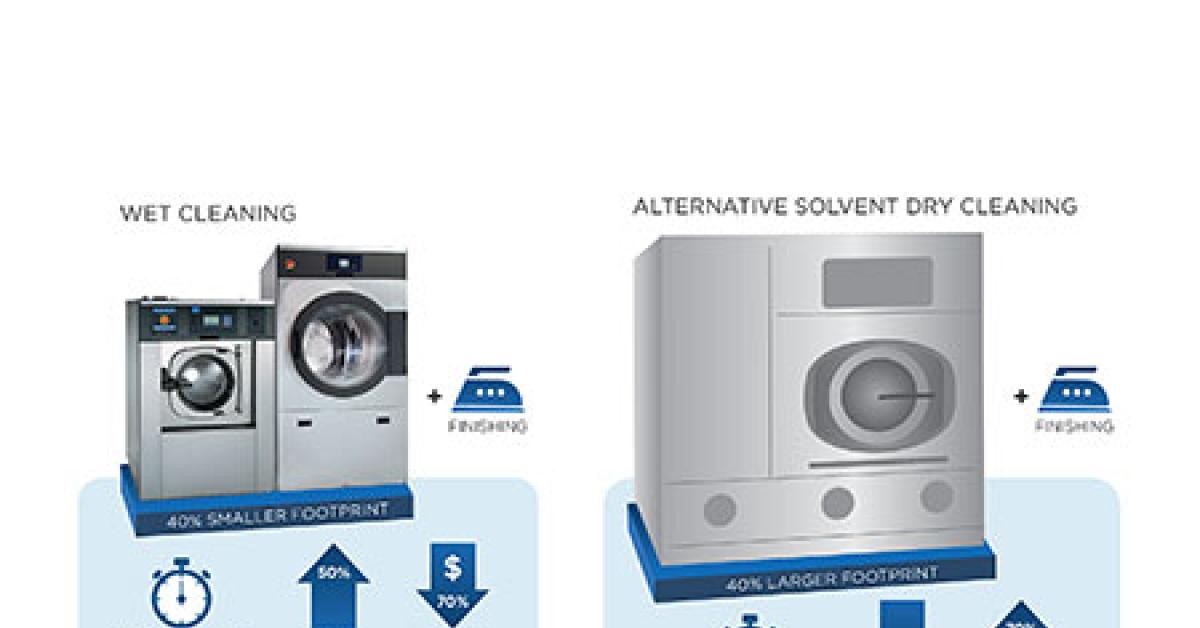TROY, Mich. — Highly programmable wetcleaning machines have been on the market for years. But, they haven’t been utilized to their fullest potential because their partner dryers were seriously lacking.
These traditional tumble dryers made it difficult to dry delicate items, such as silks, wools and linens, without damaging them. So, delicate items coming in the door were either air-dried, which took a lot of time and space, or dry-cleaned.
New dryer technology, however, is changing the industry’s perception of wet cleaning. For the first time, wet cleaning is a viable processing option for virtually any garment or fabric type. It’s also a great technique for catapulting plant throughput and business opportunity.
Why are the new “wetcleaning” dryers the answer? Because they are completely different than traditional tumble dryers.
As you likely know, garments are most vulnerable when they are fully saturated with water or nearly dry. The new dryers give operators the ability to remove moisture quickly, without tumbling, by controlling g-force and drum action.
When garments are wet, the drum must spin with just enough g-force so the garments will cling to the drum, rather than fall and tumble from top to bottom. Additionally, new dryers can hit high drum temperatures extremely quickly in order to evaporate moisture without as much tumbling, and programmable moisture-sensing ensures items dry to correct moisture levels.
Look for dryers with phased control over the drying process. Each phase should allow programmability of drum rotation speed, drum rotation interval, moisture level, timed reversing, input air temperature, drying temperature, heating temperature, drying time and time limit.
Thanks to today’s technologies, plants can wet-clean quickly and cost-effectively.
For example, a plant utilizing a 60-pound-capacity wetcleaning machine and 60-pound dryer (new technology) can process (wash/dry/finish/package) 90 pounds of garments in 75 minutes. If that plant used a 60-pound-capacity drycleaning machine instead, it would take 75 minutes to process the same 60 pounds. (See graphic.)
Moreover, wet cleaning outperforms dry cleaning without the cost, space or potential negative environmental impact. When compared with dry cleaning, wet cleaning takes a 70 % smaller initial investment, and the system occupies a smaller footprint.
GAME ON
While historically wet cleaning was not comparable to dry cleaning in terms of results and production, I believe now it is. And, by adding or expanding wet cleaning, traditional dry cleaners are drastically elevating production and, in doing so, creating opportunity.
Most textile care plants use wet cleaning for 10-30 % of what they process. By turning that up a few notches, really good things can happen.
And yes, with the right equipment, fabricare plants are effectively wet-cleaning anything that can be dry cleaned. This includes wool coats, suits, skirts and sweaters, as well as silks, taffeta, cotton, GORE-TEX® and linen. Rather than sending out leathers and suedes at a $30 to $40 per item, plants are successfully wet-cleaning them for less than a dollar each.
Check back Thursday for the conclusion.
Have a question or comment? E-mail our editor Dave Davis at [email protected].


